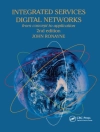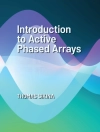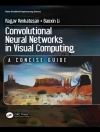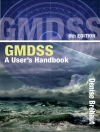A comprehensive reference giving a thorough explanation of propagation mechanisms, channel characteristics results, measurement approaches and the modelling of channels
Thoroughly covering channel characteristics and parameters, this book provides the knowledge needed to design various wireless systems, such as cellular communication systems, RFID and ad hoc wireless communication systems. It gives a detailed introduction to aspects of channels before presenting the novel estimation and modelling techniques which can be used to achieve accurate models.
To systematically guide readers through the topic, the book is organised in three distinct parts. The first part covers the fundamentals of the characterization of propagation channels, including the conventional single-input single-output (SISO) propagation channel characterization as well as its extension to multiple-input multiple-output (MIMO) cases. Part two focuses on channel measurements and channel data post-processing. Wideband channel measurements are introduced, including the equipment, technology and advantages and disadvantages of different data acquisition schemes. The channel parameter estimation methods are then presented, which include conventional spectral-based estimation, the specular-path-model based high-resolution method, and the newly derived power spectrum estimation methods. Measurement results are used to compare the performance of the different estimation methods. The third part gives a complete introduction to different modelling approaches. Among them, both scattering theoretical channel modelling and measurement-based channel modelling approaches are detailed. This part also approaches how to utilize these two modelling approaches to investigate wireless channels for conventional cellular systems and some new emerging communication systems. This three-part approach means the book caters for the requirements of the audiences at different levels, including readers needing introductory knowledge, engineers who are looking for more advanced understanding, and expert researchers in wireless system design as a reference.
- Presents technical explanations, illustrated with examples of the theory in practice
- Discusses results applied to 4G communication systems and other emerging communication systems, such as relay, Co MP, and vehicle-to-vehicle rapid time-variant channels
- Can be used as comprehensive tutorial for students or a complete reference for engineers in industry
- Includes selected illustrations in color
- Program downloads available for readers
- Companion website with program downloads for readers and presentation slides and solution manual for instructors
Essential reading for Graduate students and researchers interested in the characteristics of propagation channel , or who work in areas related to physical layer architectures, air interfaces, navigation, and wireless sensing
Spis treści
Preface xi
List of Acronyms and Symbols xiii
1 Introduction 1
1.1 Book Objective 1
1.2 The Historical Context 2
1.2.1 Importance of Channel Characterization 2
1.2.2 Single-input, Single-output Channel Models 2
1.2.3 Spatial Channel Models (SCMs) 5
1.2.4 Channel Models for 5G 6
1.2.5 Other Kinds of Channel Model 7
1.3 Book Outline 8
Bibliography 9
2 Characterization of Propagation Channels 15
2.1 Three Phenomena in Wireless Channels 15
2.2 Path Loss and Shadowing 16
2.3 Multipath Fading 18
2.4 Stochastic Characterization of Multipath Fading 22
2.4.1 Received Envelope and Phase Distribution 23
2.4.2 Envelope Level Cross Rate and Average Fade Duration 24
2.4.3 Correlation Functions 24
2.5 Duality of Multipath Fading 26
2.6 WSSUS Assumption of Multipath Fading 28
2.7 A Review of Propagation Channel Modeling 31
2.7.1 Classification of MIMO Channel Models 32
2.7.2 Classification of V2V Channel Models 35
Bibliography 38
3 Generic Channel Models 41
3.1 Channel Spread Function 43
3.2 Specular-path Model 46
3.3 Dispersive-path Model 51
3.4 Time-evolution Model 54
3.5 Power Spectral Density Model 57
3.6 Model for Keyhole Channel 68
Bibliography 73
4 Geometry-based Stochastic Channel Modeling 77
4.1 General Modeling Procedure 77
4.2 Regular-shaped Geometry-based Stochastic Models 79
4.2.1 RS-GBSMs for Conventional Cellular Communication Systems 79
4.2.2 RS-GBSMs for V2V Communication Systems 82
4.3 Irregular-shaped Geometry-based Stochastic Models 83
4.4 Simulation Models 84
4.4.1 Filter Simulation Models 86
4.4.2 Sum-of-sinusoids Simulation Models 88
4.5 Simulation Models for Non-isotropic Scattering Narrowband SISO V2V Rayleigh Fading Channels 90
4.5.1 A Two-ring SISO V2V Reference Model 91
4.5.2 So S Simulation Models 92
Bibliography 103
5 Channel Measurements 106
5.1 Channel-sounding Equipment/System 107
5.2 Post-processing of Measurement Data 109
5.3 Impact of Phase Noise and Possible Solutions 110
5.3.1 Mitigating Phase Noise: the Sliding Window 111
5.3.2 Mitigating Phase Noise: Whitening and the SAGE algorithm 113
5.4 Directional Radiation Patterns 117
5.5 Switching-mode Selection 124
5.5.1 Switching-mode for Channel Sounding 125
5.5.2 Estimation of Doppler Frequency 126
5.5.3 Ambiguity in Parameter Estimation 129
5.5.4 Case Study: TDM-SIMO Channel Sounding with a Uniform Linear Array 130
5.5.5 Switching-mode Optimization 132
5.5.6 Simulation Studies 134
Bibliography 142
6 Deterministic Channel-parameter Estimation 145
6.1 Bartlett Beamformer 146
6.2 The MUSIC Algorithm 148
6.3 The ESPRIT and Propagator Methods 150
6.3.1 Esprit 150
6.3.2 The Propagator Algorithm 152
6.4 Maximum-likelihood Method 152
6.5 The SAGE Algorithm 153
6.5.1 Signal model 155
6.5.2 The SAGE Algorithm Derived 159
6.5.3 Initialization of Parameter Estimates for Executing the SAGE Algorithm 167
6.6 A Brief Introduction to the Ri MAX Algorithm 172
6.7 Evidence-framework-based Algorithms 172
6.7.1 Multi-level Evidence Framework 173
6.7.2 Example I: Exponential Decay used in Three-level EF 174
6.7.3 Example II: Delay Spread in a Two-level EF 176
6.8 Extended Kalman-filter-based Tracking Algorithm 178
6.8.1 Overview 178
6.8.2 The Structure of an EKF 179
6.8.3 Model Mismatch due to the Linear Approximation 183
6.8.4 Tracking Performance and the Initial Phase 184
6.9 Particle-filter-based Tracking Algorithm 188
6.9.1 State-space Model 189
6.9.2 Observation Model 190
6.9.3 The Proposed Low-complexity Particle Filter 190
6.9.4 Experimental Investigation 193
Bibliography 197
7 Statistical Channel-parameter Estimation 201
7.1 A Brief Review of Dispersive Parameter Estimators 201
7.2 Dispersive Component Estimation Algorithms 203
7.2.1 Effective Signal Model 204
7.2.2 Specular–Scatterer Model Estimation 205
7.2.3 First-order GAM Model Estimation 207
7.2.4 Nominal Azimuth Estimators 208
7.2.5 Azimuth Spread Estimator 212
7.2.6 Simulation Studies 213
7.3 PSD-based Dispersive Component Estimation 218
7.4 Bidirection-delay-Doppler Frequency PSD Estimation 219
7.4.1 Channel Power Spectrum Estimator 219
7.4.2 Measurement Data Evaluation 225
Bibliography 232
8 Measurement-based Statistical Channel Modeling 236
8.1 General Modeling Procedures 237
8.1.1 Channel Measurement 237
8.1.2 Channel Parameter Estimation 238
8.1.3 Stochastic Channel Modeling 240
8.2 Clustering Algorithm based on Specular-path Models 241
8.2.1 Stochastic Cluster-based Channel Modeling 242
8.2.2 Clustering Algorithms based on Multipath Component Distance 243
8.3 Data Segment-length Selection 245
8.4 Relay and Co MP Channel Modeling 249
8.4.1 Introduction 249
8.4.2 SSF Cross-correlation and Modeling Methodology 250
8.4.3 Measurements for Relay-channel Characterization 252
8.4.4 Model Extraction 253
Bibliography 257
9 In Practice: Channel Modeling for Modern Communication Systems 260
9.1 Scenarios for V2V and Cooperative Communications 260
9.1.1 V2V Communication Scenarios 260
9.1.2 Cooperative Communication Scenarios 263
9.2 Channel Characteristics 264
9.2.1 Channel Characteristics of V2V Communication Systems 264
9.2.2 Channel Characteristics of Cooperative Communication Systems 264
9.3 Scattering Theoretical Channel Models for Conventional Cellular MIMO Systems 265
9.3.1 A Wideband Multiple-ring-based MIMO Channel Reference Model 266
9.3.2 Generic Space–Time–Frequency CF 270
9.3.3 MIMO Simulation Models 272
9.3.4 Numerical Results and Analysis 275
9.3.5 Summary 278
9.4 Scattering Theoretical Channel Models for V2V Systems 279
9.4.1 Modeling and Simulation of MIMO V2V Channels: Narrowband 279
9.4.2 Modeling and Simulation of MIMO V2V Channels: Wideband 304
9.5 Scattering Theoretical Channel Models for Cooperative MIMO Systems 329
9.5.1 A Unified Cooperative MIMO Channel-model Framework 330
9.5.2 A New MIMO GBSM for Cooperative Relay Systems 333
9.5.3 Multi-link Spatial Correlation Functions 339
9.5.4 Numerical Results and Analysis 342
9.5.5 Summary 348
Bibliography 349
Appendix A 353
A.1 Influence of Neglecting Doppler Shift within the Sensing Periods 353
A.2 Simplification of the Noise Component in an Objective Function 357
A.3 Derivations of Equations (7.6)–(7.8) 359
A.4 Derivation of Eqs (4.20a) and (4.20b) 361
A.5 Derivation of the CF ˆρĥĥ(τ) 363
A.6 Probability Density Functions 364
A.7 Computation of the Gerschgorin Radii 365
A.8 Derivations for Chapter 9 367
A.8.1 Derivation of Eq. (9.11) 367
A.8.2 Derivation of Eq. (9.16) 368
A.8.3 Derivation of Eqs (9.43)–(9.48) 369
A.8.4 Derivation of Eq. (9.53) 370
A.8.5 Derivation of Eq. (9.60) 370
A.8.6 Comparison of the Doppler PSDs with different CFs, Eqs (9.49) and (9.50) 371
A.8.7 Derivation of Eq. (9.75b) 373
A.8.8 Derivation of the Condition max{RT , RR} < min{al − al−1 } that Guarantees the TDL Structure of our Model 374
A.8.9 The Reduced Expressions of Spatial Correlation 374
Bibliography 378
Index 379
O autorze
XUEFENG YIN, Tongji University, China
XIANG CHENG, Peking University, China












